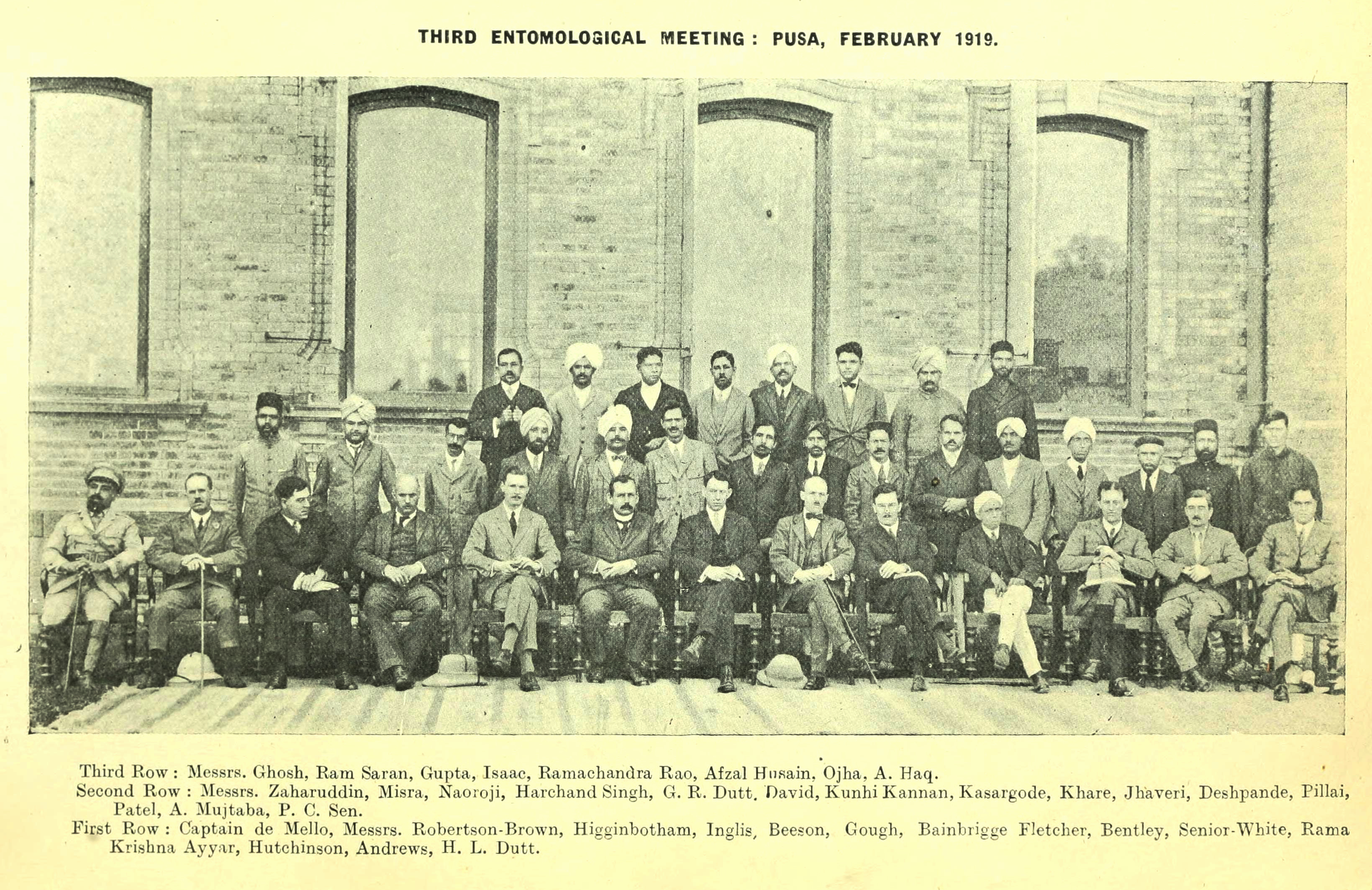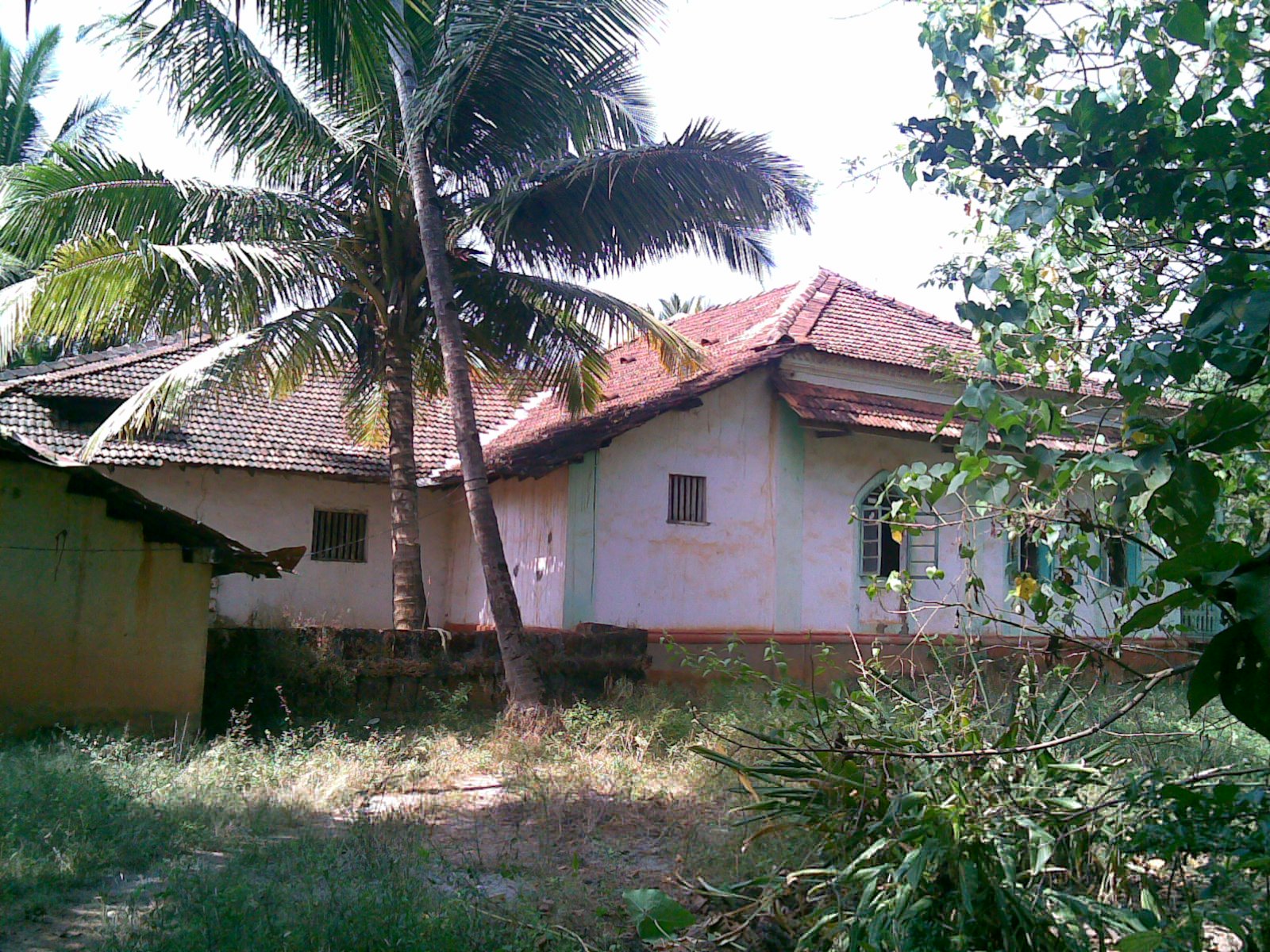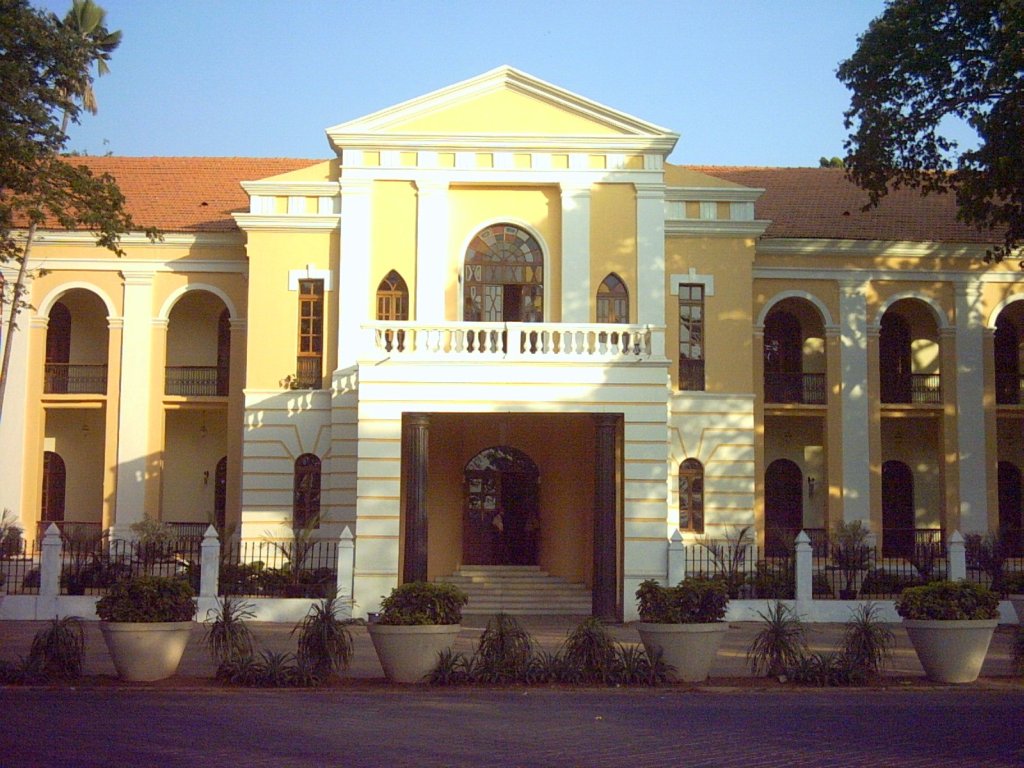|
Froilano De Mello
Indalencio Pascoal Froilano de Mello (17 May 1887 – 9 January 1955) was a Portuguese microbiologist, medical scientist, professor, author and an independent MP in the Portuguese parliament. During his scientific career, Mello was responsible for the discovery of thousands of protozoa, parasites and microbes which today bear the Latin names given by him, followed by his own surname. He served as mayor of Nova Goa from 1938 to 1945. During his tenure as an MP from 1945 to 1949, he represented the constituency of Portuguese India, namely its overseas provinces of Goa, Daman and Diu in the National Assembly at Lisbon. Early life Indalencio Pascoal Froilano de Mello was born in Benaulim, Salcette ''concelho'' to Goan Catholic parents. He was the eldest son of the lawyer Constâncio Francisco de Mello, and Delfina Rodrigues, the daughter of Dr. Raimundo Venâncio Rodrigues. Rodrigues was the mayor of Coimbra, member of the ''Cortes Gerais'' in Portugal and one of the first directo ... [...More Info...] [...Related Items...] OR: [Wikipedia] [Google] [Baidu] |
Benaulim
Benaulim (''Bannalem'') is a village in the state of Goa, India. Located in Salcete taluka of South Goa district, it neighbours Colva village to the north, Margao in the northeast and Varca village to the south. During Portuguese rule, it was one of the nine communidades in Salcete. Benaulim is the birthplace of St. Joseph Vaz, who was a priest and missionary in Ceylon. Benaulim is home to several traditional carpenters, and has long been known as Goa's 'village of carpenters'. There are two churches in Benaulim. The Holy Trinity Church in Mazilvaddo is a modern church built over the centuries-old chapel of the Loiola Pereira family. The St John the Baptist Church in Povacao area closer to Colva, is where St. Joseph Vaz was baptised. In 2016, Benaulim hosted the 8th BRICS Summit. Etymology The village was known as ''Banahalli'' or ''Banawali'' (the village of the arrow) before the advent of the Portuguese. ''Ban'' is the Sanskrit word for 'arrow' and ''Halli'' the Kann ... [...More Info...] [...Related Items...] OR: [Wikipedia] [Google] [Baidu] |
Salcette
Salcete or Salcette (Konkani: ''Saxtti''/''Xaxtti'') is a subdivision of the district of South Goa, in the state of Goa, situated by the west coast of India. The Sal River and its backwaters dominate the landscape of Salcete. Historically, the sixty-six settlements south of the Zuari River formed the original Salcette territory. Salcete forms a part of the bigger Konkan region that stretches along the western shoreline of peninsular India. In erstwhile Portuguese Goa, the Salcette ''concelho'' (county) located in the ''Velhas Conquistas'' (Old Conquests) was co-terminous with the undivided Salcette territory ( Mormugao and Salcete ''talukas''). In 1917, the ''concelho'' was bifurcated into the present-day ''talukas'' of Mormugao and Salcete. The contemporary Salcete ''taluka'' has been classified as a rurban area. Margao serves as the administrative headquarters of both Salcete ''taluka'' and the South Goa district. Etymology "Salcete" is the modern Portuguese spell ... [...More Info...] [...Related Items...] OR: [Wikipedia] [Google] [Baidu] |
Microbiology
Microbiology () is the branches of science, scientific study of microorganisms, those being of unicellular organism, unicellular (single-celled), multicellular organism, multicellular (consisting of complex cells), or non-cellular life, acellular (lacking cells). Microbiology encompasses numerous sub-disciplines including virology, bacteriology, protistology, mycology, immunology, and parasitology. The organisms that constitute the microbial world are characterized as either prokaryotes or eukaryotes; eukaryote, Eukaryotic microorganisms possess membrane-bound organelles and include fungi and protists, whereas prokaryote, prokaryotic organisms are conventionally classified as lacking membrane-bound organelles and include Bacteria and Archaea. Microbiologists traditionally relied on culture, staining, and microscopy for the isolation and identification of microorganisms. However, less than 1% of the microorganisms present in common environments can be cultured in isolation using c ... [...More Info...] [...Related Items...] OR: [Wikipedia] [Google] [Baidu] |
Campal
Campal is a neighborhood located in the northern part of the city of Panaji, the capital of the Indian state of Goa. It is completely located on the island of Tiswadi, one of the talukas in the state of Goa. The neighborhoods name derives from "Campal de Dom Manuel", after Dom Manuel de Portugal e Castro, who developed it as a commercial area in 1830. Local landmarks On the left side of the road into Campal there is a large four-metre cannon. Slightly further is a garden containing a statue erected in 1929 of Francisco Luis Gomes, a representative in the Cortes, in Lisbon. Campal also houses the Kala Academy, a cultural centre with indoor and outdoor auditoriums, which hosted the International Film Festival of India in 2004, as well as a gymkhana surrounded by a large playground with various sports facilities. Campal Indoor Complex is a multi-purpose indoor stadium, the home of the Sports Authority of Goa. The INOX four-screen multiplex theater, the Goa Directorate of Healt ... [...More Info...] [...Related Items...] OR: [Wikipedia] [Google] [Baidu] |
Bacteriology
Bacteriology is the branch and specialty of biology that studies the Morphology (biology), morphology, ecology, genetics and biochemistry of bacteria as well as many other aspects related to them. This subdivision of microbiology involves the identification, classification, and characterization of bacterial species. Because of the similarity of thinking and working with microorganisms other than bacteria, such as protozoa, fungi, and non-microorganism viruses, there has been a tendency for the field of bacteriology to extend as microbiology. The terms were formerly often used interchangeably. However, bacteriology can be classified as a distinct science. Overview Definition Bacteriology is the study of bacteria and their relation to medicine. Bacteriology evolved from physicians needing to apply the Germ theory of disease, germ theory to address the concerns relating to disease spreading in hospitals the 19th century. Identification and characterizing of bacteria being associ ... [...More Info...] [...Related Items...] OR: [Wikipedia] [Google] [Baidu] |
University Of Sorbonne
The University of Paris (), known Metonymy, metonymically as the Sorbonne (), was the leading university in Paris, France, from 1150 to 1970, except for 1793–1806 during the French Revolution. Emerging around 1150 as a corporation associated with the cathedral school of Paris, it was considered the List of medieval universities, second-oldest university in Europe.Charles Homer Haskins: ''The Rise of Universities'', Henry Holt and Company, 1923, p. 292. Officially chartered in 1200 by Philip II of France, King Philip II and recognised in 1215 by Pope Innocent III, it was nicknamed after its theological College of Sorbonne, founded by Robert de Sorbon and chartered by King Louis IX around 1257. Highly reputed internationally for its academic performance in the humanities ever since the Middle Ages – particularly in theology and philosophy – it introduced academic standards and traditions that have endured and spread, such as Doctor (title), doctoral degrees and student nations. ... [...More Info...] [...Related Items...] OR: [Wikipedia] [Google] [Baidu] |
Entomology Meeting 1919
Entomology (from Ancient Greek ἔντομον (''éntomon''), meaning "insect", and -logy from λόγος (''lógos''), meaning "study") is the branch of zoology that focuses on insects. Those who study entomology are known as entomologists. In the past, the term ''insect'' was less specific, and historically the definition of entomology would also include the study of animals in other arthropod groups, such as arachnids, myriapods, and crustaceans. The field is also referred to as insectology in American English, while in British English insectology implies the study of the relationships between insects and humans. Over 1.3million insect species have been described by entomology. History Entomology is rooted in nearly all human cultures from prehistoric times, primarily in the context of agriculture (especially biological control and beekeeping). The natural Roman philosopher Pliny the Elder (23–79 CE) wrote a book on the kinds of insects, while the scientist of Kufa, ... [...More Info...] [...Related Items...] OR: [Wikipedia] [Google] [Baidu] |
University Of Lisbon
The University of Lisbon (ULisboa; ) is a public university, public research university in Lisbon, and Portugal's largest university. It was founded in 1911, but the university's present structure dates to the 2013 merger of the former University of Lisbon (1911–2013) and the Technical University of Lisbon, Technical University of Lisbon (1930–2013). History University of Coimbra, the first Portuguese university, was established in Lisbon between 1288 and 1290, when Denis of Portugal, Dinis I promulgated the letter ''Scientiae thesaurus mirabili'', granting several privileges to the students of the ''studium generale'' in Lisbon, proving that it was already founded on that date. There was an active participation in this educational activity by the Portuguese Crown and its king, through its commitment of part of the subsidy of the same, as by the fixed incomes of the Church. This institution moved several times between Lisbon and Coimbra, where it settled permanently in 1537. ... [...More Info...] [...Related Items...] OR: [Wikipedia] [Google] [Baidu] |
Tropical Medicine
Tropical medicine is an interdisciplinary branch of medicine that deals with health issues that occur uniquely, are more widespread, or are more difficult to control in tropical and subtropical regions. Physicians in this field diagnose and treat a variety of diseases and ailments. Most infections they deal with are endemic to the tropics. A few of the most well-known include malaria, HIV/AIDS, and tuberculosis. They must be knowledgeable in the 18 lesser known neglected tropical diseases, which include Chagas disease, rabies, and dengue. Poor living conditions in developing regions of tropical countries have led to a rising number of non-communicable diseases as well as the prevalence of neglected tropical diseases. These diseases include cancer and cardiovascular disease, which, in the past, have been more of a worry in developed countries. Physicians trained in tropical medicine must also be prepared to diagnose and treat these diseases. Training for physicians wishing to s ... [...More Info...] [...Related Items...] OR: [Wikipedia] [Google] [Baidu] |
Porto
Porto (), also known in English language, English as Oporto, is the List of cities in Portugal, second largest city in Portugal, after Lisbon. It is the capital of the Porto District and one of the Iberian Peninsula's major urban areas. Porto city proper, which is the entire concelho, municipality of Porto, is small compared to its metropolitan area, with an estimated population of just 248,769 people in a municipality with only . Porto's urban area has around 1,319,151 people (2025) in an area of ,Demographia: World Urban Areas , March 2010 making it the second-largest urban area in Portugal. It is recognized as a global city with a Gamma + rating from the Globalization and World Cities Research Network. Located along the Douro River estuary in northern Portugal, Porto is one of the oldest European centers and ... [...More Info...] [...Related Items...] OR: [Wikipedia] [Google] [Baidu] |
Panaji
Panaji (; , , )also known as Panjim, is the capital of the Indian state of Goa and the headquarters of North Goa district. Previously, it was the territorial capital of the former Portuguese India. It lies on the banks of the Mandovi river estuary in the Tiswadi sub-district (''taluka''). With a population of 114,759 in the metropolitan area, Panaji is Goa's largest urban agglomeration, ahead of Margao and Mormugao. Panaji has terraced hills, concrete buildings with balconies and red-tiled roofs, churches, and a riverside promenade. There are avenues lined with gulmohar, acacia and other trees. The baroque Our Lady of the Immaculate Conception Church, Goa, Our Lady of the Immaculate Conception Church is located overlooking the main square known as Praça da Igreja. Panaji has been selected as one of a hundred Indian cities to be developed as a smart city under the Smart Cities Mission. Panaji's HDI is almost around 0.90, and is considered to be the best amongst other major Indi ... [...More Info...] [...Related Items...] OR: [Wikipedia] [Google] [Baidu] |
Portugal
Portugal, officially the Portuguese Republic, is a country on the Iberian Peninsula in Southwestern Europe. Featuring Cabo da Roca, the westernmost point in continental Europe, Portugal borders Spain to its north and east, with which it shares Portugal-Spain border, the longest uninterrupted border in the European Union; to the south and the west is the North Atlantic Ocean; and to the west and southwest lie the Macaronesia, Macaronesian archipelagos of the Azores and Madeira, which are the two Autonomous Regions of Portugal, autonomous regions of Portugal. Lisbon is the Capital city, capital and List of largest cities in Portugal, largest city, followed by Porto, which is the only other Metropolitan areas in Portugal, metropolitan area. The western Iberian Peninsula has been continuously inhabited since Prehistoric Iberia, prehistoric times, with the earliest signs of Human settlement, settlement dating to 5500 BC. Celts, Celtic and List of the Pre-Roman peoples of the Iberia ... [...More Info...] [...Related Items...] OR: [Wikipedia] [Google] [Baidu] |










